
Roots
The whisper of silk against skin, the soft embrace of cotton, the quiet dignity of a carefully draped fabric – these are not merely acts of covering, but gestures laden with meaning, stretching back through countless generations. For many, a head covering is a personal expression, a link to heritage, or a statement of belief. Yet, beneath these layers of tradition and identity, a more intimate story unfolds, one written upon the scalp and within the very strands of hair.
Can these venerable practices, so rich in cultural significance, truly influence the delicate balance of scalp health and the body’s nutrient stores? This exploration seeks to understand the unseen dynamics at play, gently guiding us through the intricate relationship between adornment and biological well-being.
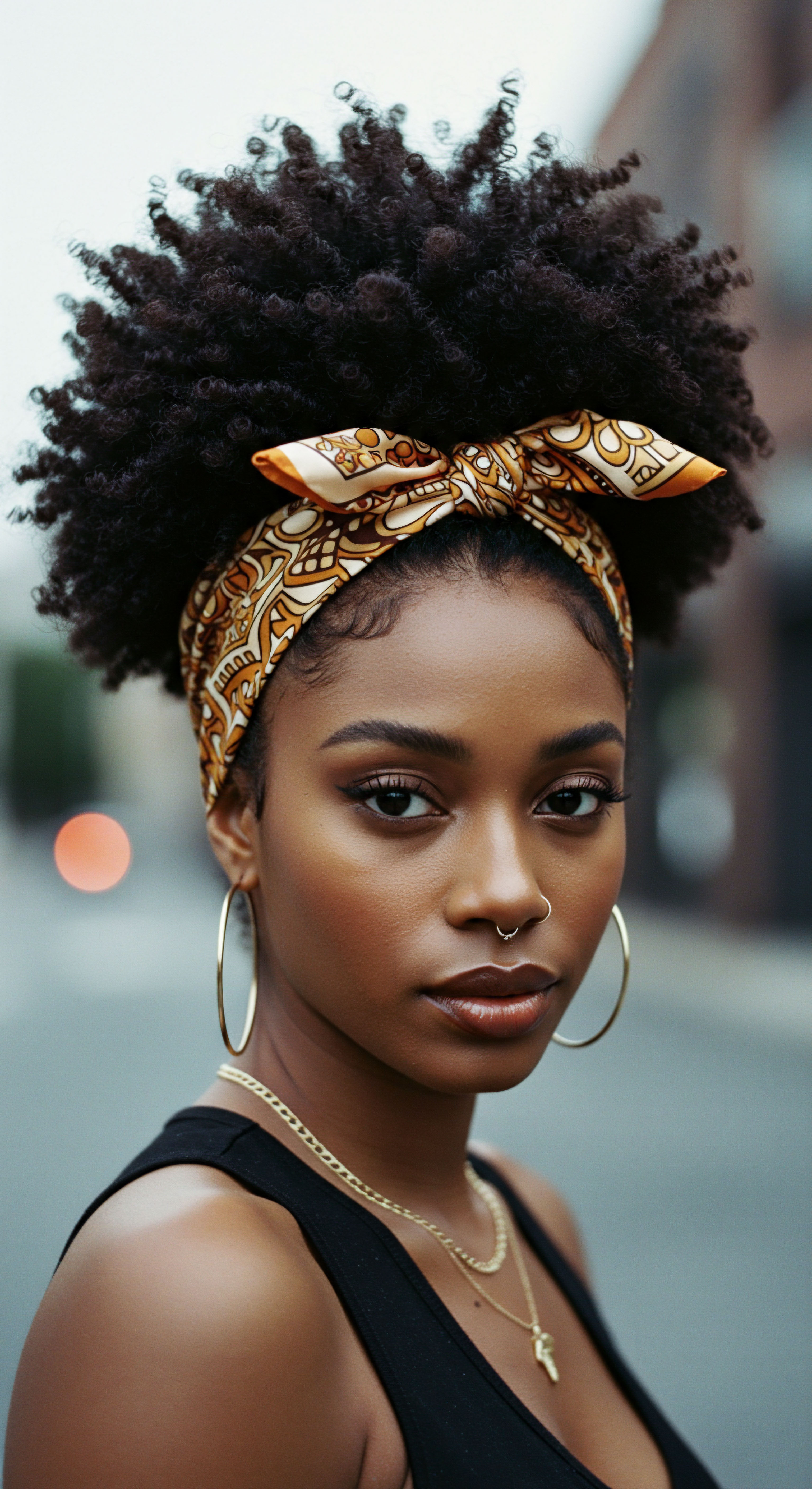
Hair’s Hidden Foundation
The scalp, often overlooked, serves as the very soil from which our hair springs. It is a vibrant ecosystem, home to a delicate balance of moisture, oils, and microorganisms. Healthy hair growth depends fundamentally on a healthy scalp. Each hair strand begins its journey deep within a follicle, a tiny organ nestled beneath the skin’s surface.
These follicles are highly active, constantly producing new cells that push upward, forming the visible hair shaft. The health of these follicles, in turn, relies on a steady supply of nutrients delivered through the bloodstream.
When we speak of hair health, we often focus on the visible length, the sheen, or the texture. However, the true vitality of our hair stems from its roots, quite literally. The scalp’s microenvironment—its temperature, humidity, pH, and sebum composition—all play a significant role in fostering an ideal setting for hair to flourish. Any sustained alteration to this environment can set off a chain reaction, potentially impacting the hair’s structural integrity and its growth cycle.

Understanding Hair Growth Cycles
Hair does not simply grow continuously; it follows a cyclical pattern, a rhythmic dance of growth, regression, and rest. This cycle consists of three primary phases:
- Anagen ❉ The active growth phase, where hair cells rapidly divide and hair lengthens. This phase can last for several years, determining the maximum length a hair can achieve.
- Catagen ❉ A brief transitional phase, lasting a few weeks, where hair growth stops and the follicle shrinks.
- Telogen ❉ The resting phase, during which the hair remains in the follicle but does not grow. After this phase, the old hair sheds, and a new anagen phase begins.
Disruptions to this natural rhythm, perhaps caused by prolonged environmental shifts on the scalp, could lead to premature shedding or a reduction in the anagen phase, resulting in thinner, less dense hair. Maintaining the optimal conditions for these cycles is paramount for anyone seeking vibrant, full strands.

What Happens Underneath the Covering?
When a head covering is worn for extended periods, it creates a unique microclimate around the scalp. This enclosed space can influence several environmental factors, including:
- Temperature and Humidity ❉ Head coverings can trap heat and moisture close to the scalp, increasing both temperature and humidity.
- Air Circulation ❉ The presence of fabric can restrict air movement, leading to a less ventilated environment.
- Friction and Tension ❉ Depending on the material and how tightly it is worn, the covering can cause constant rubbing or pulling on the hair and scalp.
These changes, while seemingly minor, hold the potential to alter the scalp’s delicate balance, impacting everything from sweat gland function to the microbial populations that call the scalp home. The body’s systems are remarkably adaptive, yet continuous deviation from an ideal state can lead to subtle, cumulative effects over time.
The scalp, a living foundation for hair, responds to the environment created by traditional coverings, affecting its delicate balance.

Ritual
Stepping from the fundamental understanding of hair’s biology, we turn now to the daily practices and cherished traditions that often involve head coverings. For many, these are not mere garments but extensions of self, steeped in personal history and collective memory. Yet, as we honor these customs, a practical wisdom calls us to consider how our choices in material, fit, and daily care can harmonize with the natural rhythms of our scalp and hair. This section offers guidance, a gentle hand leading through the tangible steps one might take to ensure well-being coexists with custom.

Material Matters
The fabric that touches the scalp and hair for hours each day holds significant sway over the localized environment. Different materials possess varying properties regarding breathability, moisture absorption, and friction.
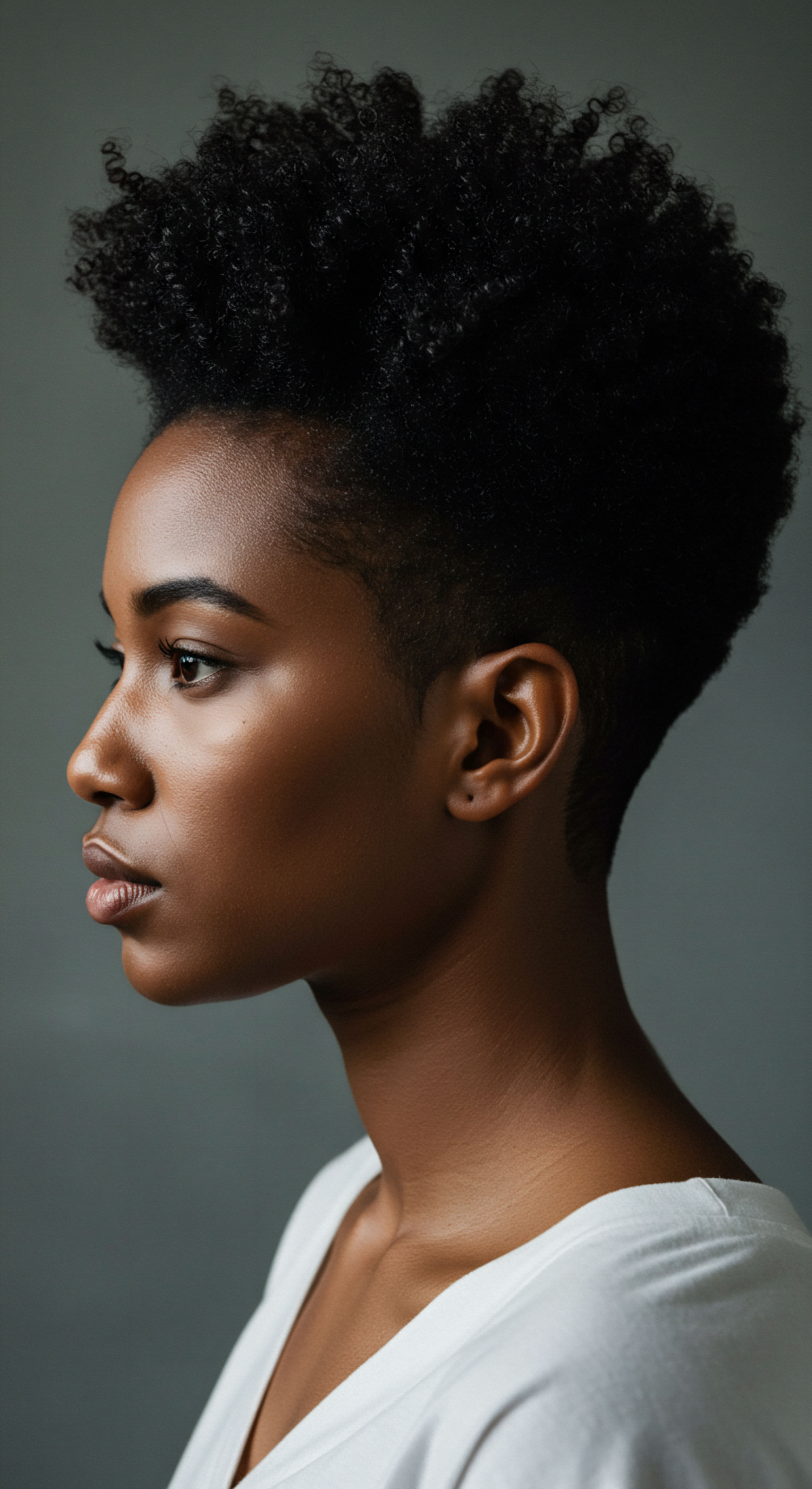
Selecting Thoughtfully
Choosing the right material can significantly mitigate potential issues.
- Breathable Fabrics ❉ Materials like cotton, bamboo, or silk allow for better air circulation, helping to regulate temperature and reduce moisture buildup. These natural fibers tend to be gentler on hair strands.
- Smooth Textures ❉ Silk and satin, known for their smooth surfaces, reduce friction against the hair. This minimizes mechanical damage, such as breakage and frizz, which can be particularly pronounced in textured hair types. Cotton, while breathable, can sometimes absorb moisture from the hair and create more friction.
- Avoid Synthetic, Non-Porous Materials ❉ Certain synthetic fabrics may trap heat and moisture, creating a warm, damp environment that can encourage microbial overgrowth or irritation.
A thoughtful selection acknowledges both the cultural significance and the biological needs of the scalp.

The Importance of Fit and Style
Beyond the material, how a head covering is worn can also influence scalp and hair health. Tightness, constant pressure, and repetitive styling under the covering warrant consideration.

Does Tightness Affect Hair Follicles?
Yes, excessive tension on hair follicles, often from very tight styles or coverings, can lead to a condition known as Traction Alopecia. This form of hair loss results from prolonged pulling on the hair roots, which can damage the follicles over time and prevent new hair growth. While often associated with tight braids, ponytails, or extensions, a consistently tight head covering can also contribute to this issue, particularly if it pulls at the hairline or creates pressure points.
The initial signs might be tenderness, small bumps, or thinning along the edges of the hair. Recognizing these early signals is important for reversal.
Conversely, a covering that is too loose might shift, leading to constant rubbing and friction, which can also cause breakage, especially for delicate textured hair. A comfortable, secure fit that allows for some air movement without slipping is ideal.
| Characteristic Breathability |
| Benefit for Scalp Health Allows air circulation, reduces trapped heat and humidity. |
| Characteristic Smoothness |
| Benefit for Scalp Health Minimizes friction, lessens hair breakage and cuticle damage. |
| Characteristic Moisture Wicking |
| Benefit for Scalp Health Helps manage sweat and excess oil, maintaining a drier scalp. |
| Characteristic Softness |
| Benefit for Scalp Health Reduces irritation and pressure on sensitive scalp areas. |
| Characteristic Choosing materials with these qualities supports a healthier scalp microenvironment. |

Daily Care Underneath
The regimen for hair and scalp care takes on added importance when head coverings are part of daily life. The scalp’s environment, being more enclosed, may require adjustments to cleansing, moisturizing, and ventilation practices.

Maintaining Scalp Cleanliness
A covered scalp may accumulate sweat, sebum, and product residue more readily. Regular, gentle cleansing becomes essential to prevent buildup that could clog follicles or encourage bacterial and fungal overgrowth. Choosing shampoos that cleanse effectively without stripping the scalp’s natural oils is a delicate balance.
Considerations for cleansing include:
- Frequency ❉ Adjust washing frequency based on scalp type and activity level. Some may benefit from more frequent washing, while others might find a few times a week sufficient.
- Product Choice ❉ Opt for mild, sulfate-free cleansers that address scalp concerns without causing dryness or irritation.
- Thorough Rinsing ❉ Ensure all product residue is rinsed completely to prevent buildup.

Allowing the Scalp to Breathe
While daily wear is often a given, creating moments for the scalp to receive fresh air can be beneficial. This might mean:
- Taking breaks from the covering when in private, allowing the scalp to air dry after washing or to simply ventilate.
- Ensuring hair is completely dry before covering to prevent a damp environment, which can encourage the growth of certain microorganisms.
- Using a loose, breathable liner made of silk or cotton under heavier or less breathable coverings.
Careful selection of materials and attention to fit can mitigate potential stress on hair and scalp.
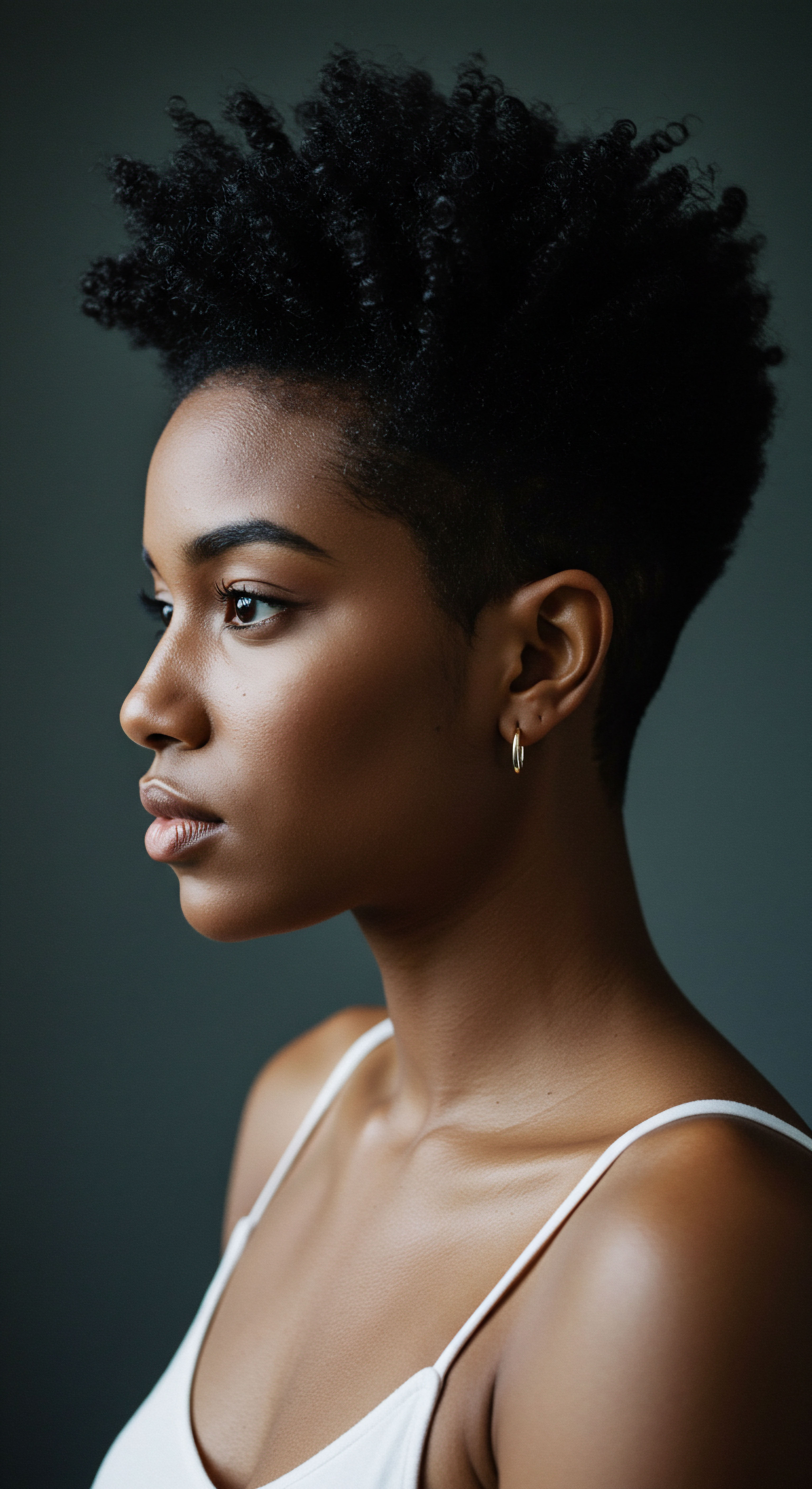
Relay
Moving beyond daily practices, we approach the deeper, more interwoven aspects of head coverings, scalp well-being, and systemic health. This section delves into the intricate interplay of biology, culture, and environment, seeking to unravel the less obvious connections. Can long-standing traditions of head covering truly impact the body’s internal nutrient balance, or contribute to specific scalp conditions that extend beyond simple irritation? This is a space for thoughtful consideration, drawing upon research and cultural understanding to illuminate complexities that might otherwise remain unseen.

The Scalp Microenvironment and Microbial Balance
The scalp is a complex biological landscape, hosting a diverse community of bacteria and fungi that form its unique microbiome. This microbial balance is crucial for maintaining scalp health, acting as a natural defense against harmful pathogens and contributing to skin barrier function. When this delicate equilibrium is disturbed, various scalp conditions can arise.

How Do Head Coverings Alter the Scalp Microbiome?
Prolonged head covering can create an environment characterized by increased temperature, elevated humidity, and reduced exposure to ultraviolet light. These altered conditions can shift the balance of the scalp microbiome. For instance, some studies indicate that such environments might favor the proliferation of certain yeasts, like those belonging to the Malassezia genus, which are associated with conditions such as seborrheic dermatitis and dandruff. A warmer, moister environment can become a more hospitable breeding ground for these microorganisms, potentially leading to an overgrowth that triggers inflammatory responses in susceptible individuals.
Furthermore, reduced air circulation can lead to an accumulation of sweat and sebum, creating a nutrient-rich substrate for microbial growth. This is not to say that head coverings inherently cause these issues, but rather that the specific microclimate they create warrants attention to hygiene and material choice to maintain microbial harmony. The scalp’s immune responses are also influenced by its surface microenvironment, and a persistent imbalance could lead to a compromised barrier, making the scalp more vulnerable to external irritants.
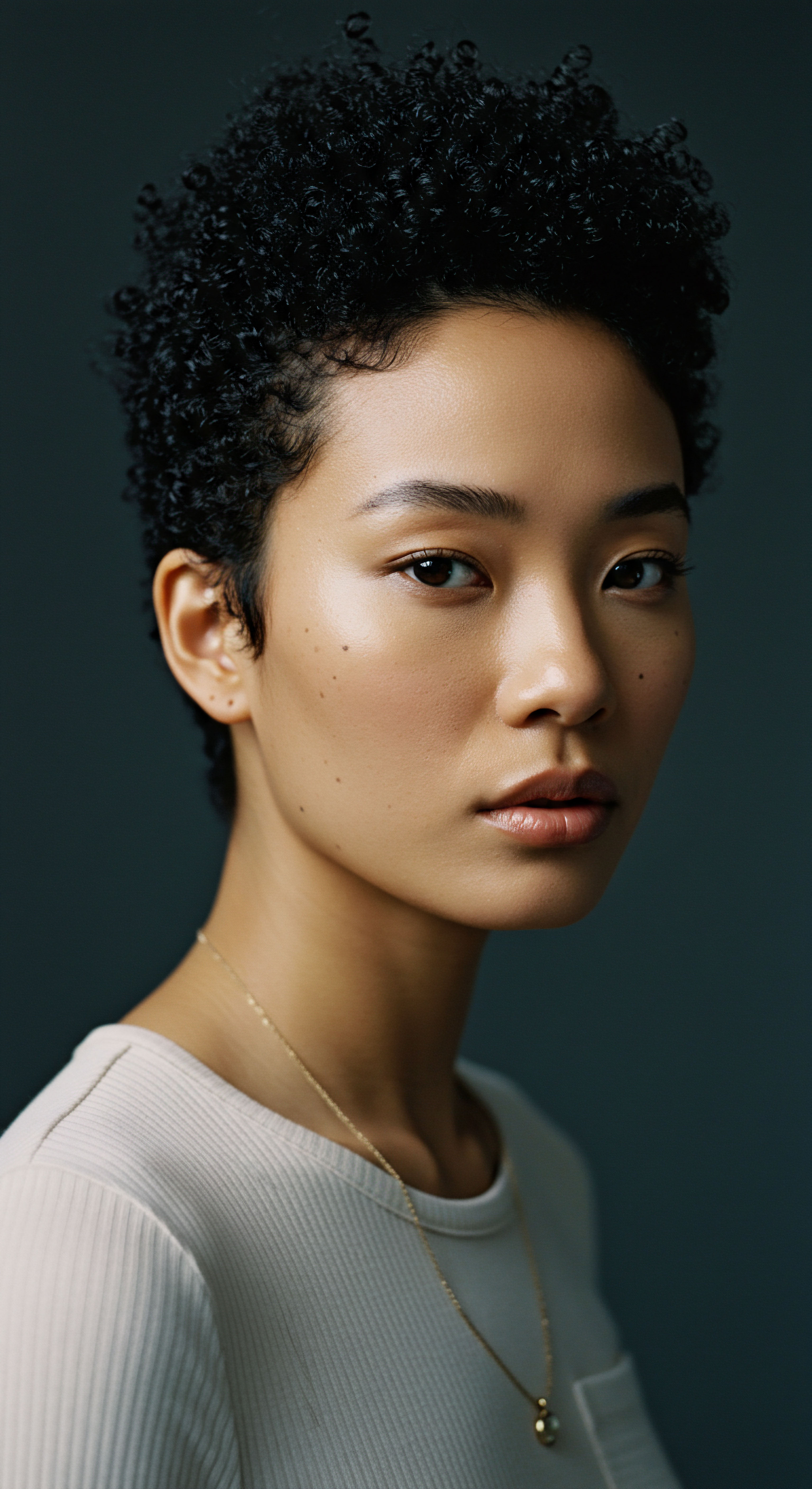
Nutrient Levels and Systemic Considerations
The relationship between head coverings and nutrient levels extends beyond the immediate scalp environment, touching upon broader systemic health. One of the most frequently discussed aspects relates to Vitamin D synthesis.
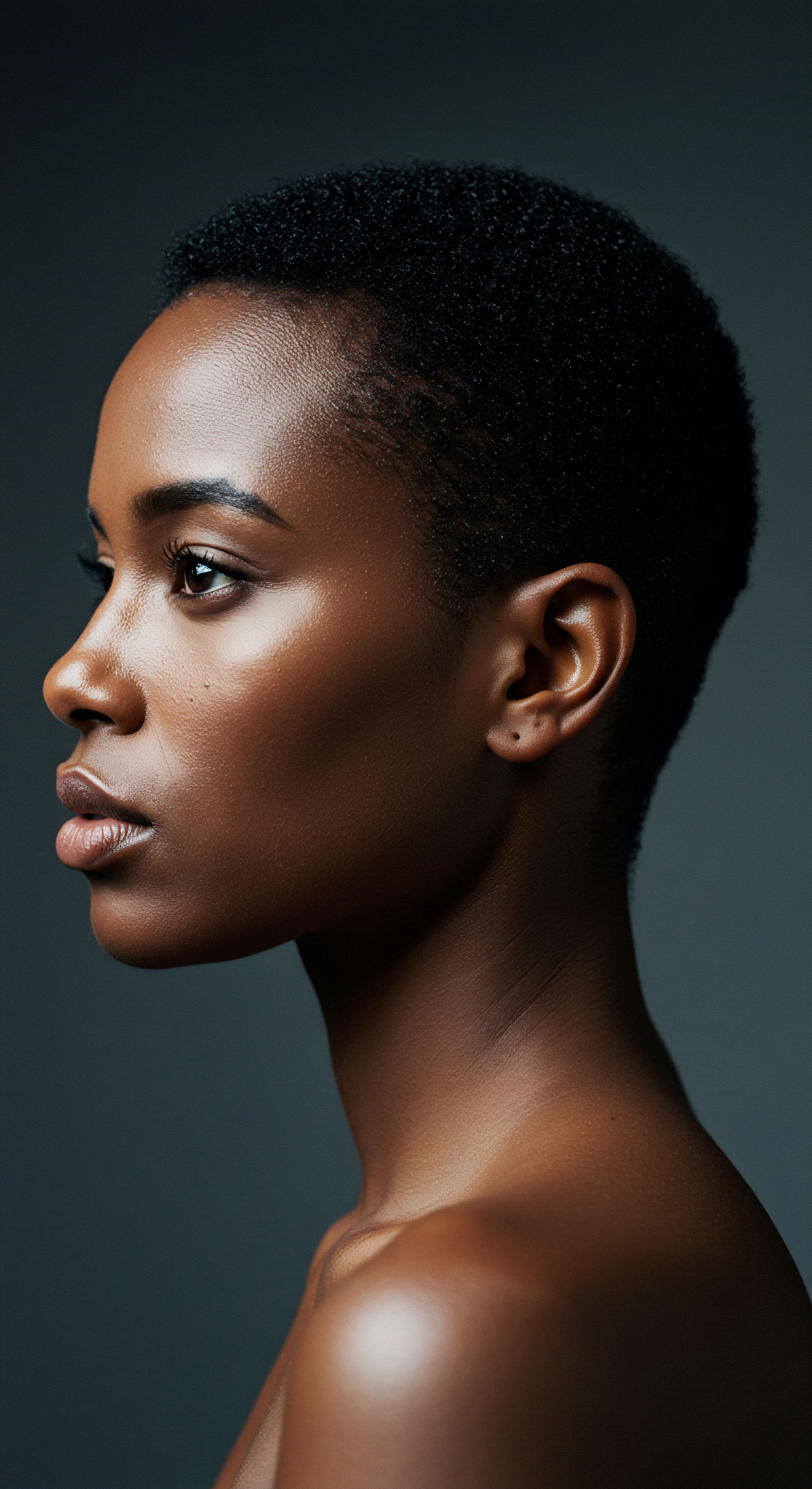
Can Reduced Sun Exposure Influence Vitamin D Status?
Sunlight, specifically ultraviolet B (UVB) radiation, is essential for the skin’s synthesis of Vitamin D. When significant portions of the body, including the scalp and face, are regularly covered, the opportunity for this synthesis is reduced. This is a particularly relevant consideration for individuals living in regions with limited sunlight, or those who spend most of their time indoors, irrespective of covering practices.
Research has indeed pointed to a higher prevalence of Vitamin D deficiency among women who consistently wear head coverings compared to those who do not. For example, a review published in “Skin Appendage Disorders” in 2018 highlighted that Muslim women observing the hijab show a greater likelihood of Vitamin D insufficiency, attributing this to reduced skin exposure to the sun. While Vitamin D deficiency is a widespread global health concern affecting many populations, the consistent covering of sun-exposed skin can be a contributing factor for those who adhere to such practices.
Vitamin D plays a multifaceted role in overall health, including bone health, immune function, and even hair follicle cycling. While the direct link between Vitamin D deficiency and specific hair loss types remains an area of ongoing investigation, it is recognized as a nutrient that supports healthy hair growth. A deficiency could theoretically impact the hair cycle, leading to increased shedding or slower growth. Addressing this through dietary intake of Vitamin D-rich foods, fortified products, or supplementation under medical guidance, becomes an important consideration for maintaining systemic and, by extension, hair health.
Beyond Vitamin D, the impact on other nutrient levels is less directly tied to head coverings themselves, but rather to broader dietary and lifestyle patterns. Hair tissue mineral analysis (HTMA) is a non-invasive test that measures the mineral content in hair strands, providing a snapshot of mineral activity over the past few months. While not a direct measure of blood levels, it can offer insights into long-term nutritional status and exposure to certain elements. Studies using HTMA have explored relationships between hair mineral concentrations and various health indicators, including nutritional status in older populations.
For instance, a study in “BMC Geriatrics” (2023) observed associations between hair selenium levels and nutritional status in centenarians, noting that women had lower levels of zinc and higher levels of selenium, manganese, lead, iron, and copper than men in their cohort. While this study did not focus on head coverings, it illustrates the utility of hair analysis in reflecting systemic nutrient balance. The general understanding is that adequate intake of essential minerals like zinc, iron, and selenium is vital for healthy hair structure and growth.
The scalp’s microbial balance and the body’s nutrient status, particularly Vitamin D, can be influenced by consistent head covering practices.

The Interplay of Culture, Practice, and Health
The decision to wear a head covering is often deeply personal, rooted in cultural heritage, religious observance, or personal style. These practices have existed for centuries across various societies, from ancient Assyria and Greece to medieval Europe and diverse African and Asian cultures. The meaning behind these coverings is rich and varied, symbolizing everything from modesty and marital status to protection from elements and declarations of identity.

Are There Scalp Conditions More Prevalent in Covered Populations?
While head coverings themselves are not direct causes of most scalp diseases, the microenvironment they create can sometimes exacerbate or predispose individuals to certain conditions if proper care is not observed. For instance, increased humidity and warmth might contribute to the flourishing of conditions like seborrheic dermatitis, a common inflammatory skin condition causing flaky, itchy scalp. A study in “Clinical, Cosmetic and Investigational Dermatology” (2022) on schoolchildren in Ethiopia found dandruff (a mild form of seborrheic dermatitis) to be the most common skin disease, affecting 38.4% of the cohort. While this study did not specifically link to head coverings, it highlights the prevalence of such conditions, which could be influenced by environmental factors, including occlusion.
Conversely, some traditional coverings, especially those made of protective fabrics, may shield the scalp from environmental aggressors like pollution and harsh UV radiation. UV radiation is a known factor in skin aging and can impact scalp health over time, potentially contributing to conditions like actinic keratosis and nonmelanoma skin cancer in exposed areas. Thus, head coverings might offer a protective barrier against some external insults, presenting a dual aspect to their influence.
A more nuanced perspective recognizes that health outcomes are rarely attributable to a single factor. Instead, they arise from a complex interplay of genetics, diet, hygiene practices, environmental exposures, and cultural norms. For those who choose to wear head coverings, understanding these interactions allows for informed choices that support both cultural expression and physiological well-being.
| Environmental Change Increased Humidity |
| Potential Scalp Impact Fosters microbial growth, softens stratum corneum |
| Related Condition (if Applicable) Seborrheic Dermatitis, Fungal Infections |
| Environmental Change Reduced Airflow |
| Potential Scalp Impact Accumulation of sweat and sebum |
| Related Condition (if Applicable) Folliculitis, Irritation |
| Environmental Change Constant Friction/Tension |
| Potential Scalp Impact Mechanical stress on hair shafts and follicles |
| Related Condition (if Applicable) Traction Alopecia, Hair Breakage |
| Environmental Change Reduced UV Exposure |
| Potential Scalp Impact Decreased Vitamin D synthesis |
| Related Condition (if Applicable) Vitamin D Deficiency (systemic) |
| Environmental Change These impacts vary greatly based on material, fit, and individual practices. |

Reflection
The journey through the subtle relationship between traditional head coverings, scalp well-being, and nutrient levels reveals a landscape far richer than simple cause and effect. It is a space where ancient customs meet modern science, where personal expression intertwines with biological realities. Our exploration uncovers not a singular truth, but a spectrum of possibilities, reminding us that the human body, particularly its hair and scalp, responds to its environment with remarkable adaptability. The strength of tradition and the wisdom of informed care need not stand in opposition; rather, they can walk hand in hand, creating a path where beauty, heritage, and vitality coexist harmoniously.

References
- Khumalo, N. P. Jessop, S. Gumedze, F. & Ehrlich, R. (2015). Hairdressing is associated with scalp disease in African schoolchildren. Journal of Cosmetic Dermatology, 14(3), 216–223.
- Pirmez, R. & Tosti, A. (2018). Trichoscopy Tips. Dermatologic Clinics, 36(4), 413–420.
- Tosti, A. & Pirmez, R. (2018). Hair and Scalp Disorders ❉ Medical, Surgical, and Cosmetic Treatments. CRC Press.
- Al-Jufaili, M. A. & Al-Amri, S. (2013). Epidemiological spectrum of common dermatological conditions of patients attending dermatological consultations in Al-Majmaah Region (Kingdom of Saudi Arabia). Journal of Taibah University Medical Sciences, 8(1), 31–37.
- Pellegrin, N. (2019). Veils in the Western World ❉ A Thousand-Year History. Polity Press.
- Townsend, N. Hazan, A. & Dell’Acqua, G. (2023). New Topicals to Support a Healthy Scalp While Preserving the Microbiome ❉ A Report of Clinical and in Vitro Studies. The Journal of Clinical and Aesthetic Dermatology, 16(10 Suppl 1), S4–S11.
- Puchyr, M. Tosti, A. & Miteva, M. (2018). Hair and Scalp Disorders in Women Wearing Headscarves ❉ A Review. Skin Appendage Disorders, 4(3), 127–134.
- Wang, L. Zhang, H. Lu, J. & Li, M. (2023). Relationships Between Hair Chemical Elements and Nutritional Status in Oldest-Old and Centenarian Populations. BMC Geriatrics, 23(1), 269.
- Seidel, S. Kreutzer, R. Smith, D. McNeel, S. Mott, D. & Rock, C. (2001). Assessment of Commercial Laboratories Performing Hair Mineral Analysis. JAMA, 285(5), 674–676.
- Cho, Y. Kim, S. H. & Kim, J. H. (2019). The Association between Mineral and Trace Element Concentrations in Hair and the 10-Year Risk of Atherosclerotic Cardiovascular Disease in Healthy Community-Dwelling Elderly Individuals. International Journal of Environmental Research and Public Health, 16(6), 967.